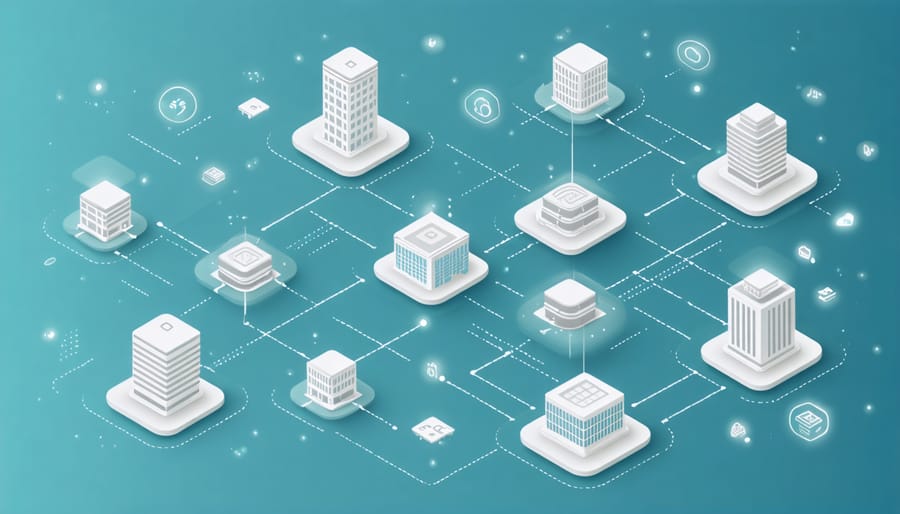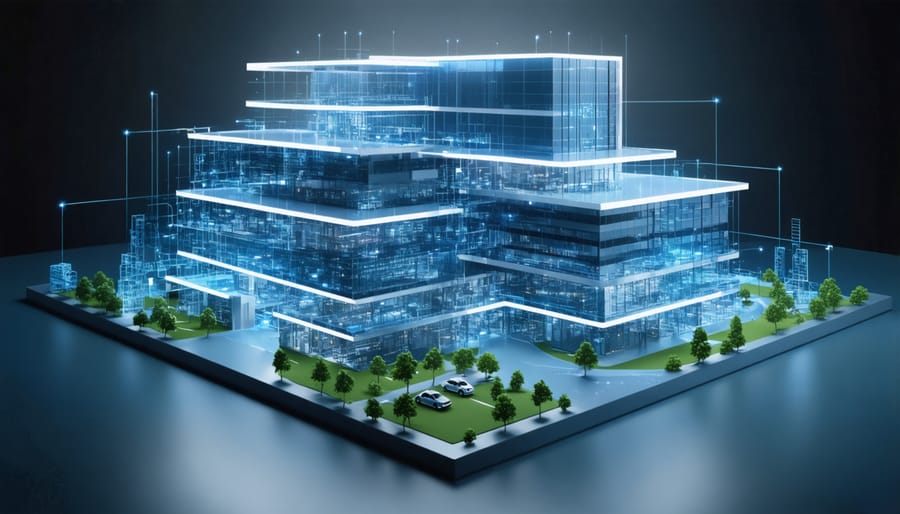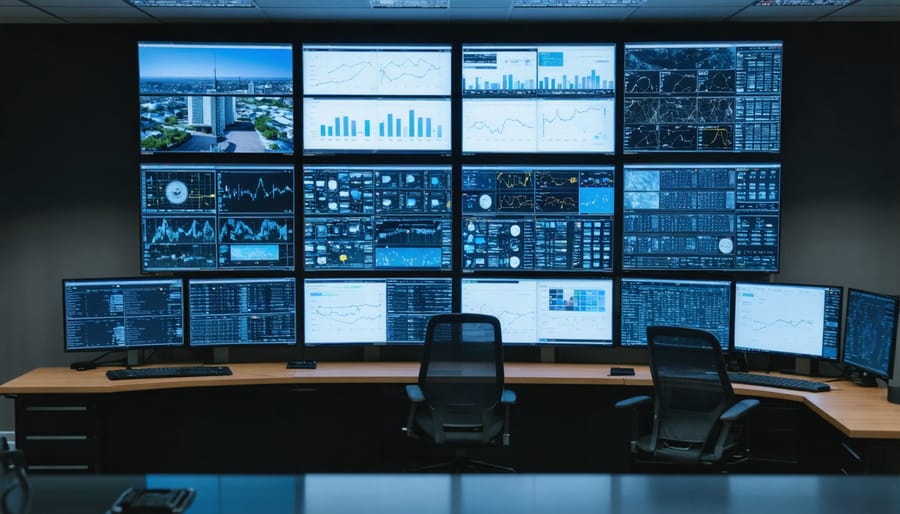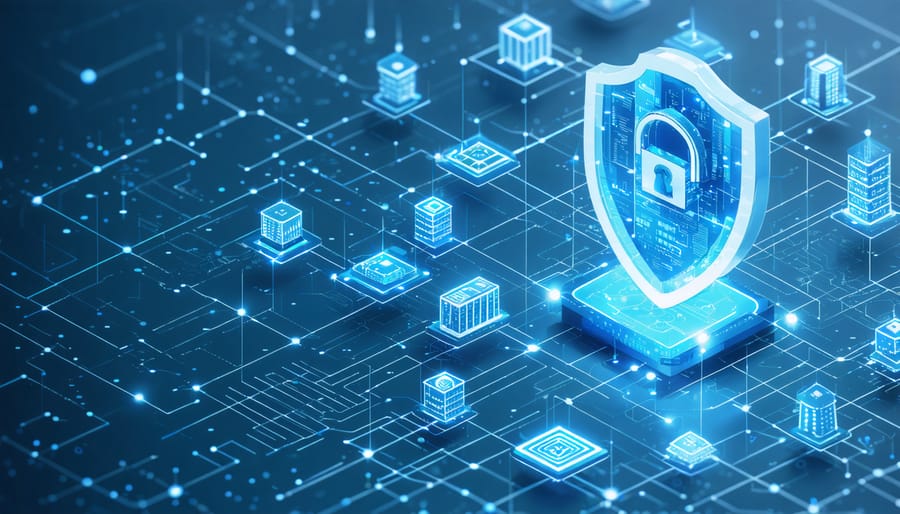In today’s digital property management landscape, an asset represents any data, system, or resource that requires protection from cyber threats. Building automation systems, tenant databases, access control mechanisms, and financial records form the critical digital backbone of modern facilities. As the future of property management increasingly relies on interconnected technologies, identifying and securing these assets becomes paramount for operational continuity.
Consider a building’s HVAC controls, surveillance systems, and maintenance logs as prime examples of assets that, if compromised, could severely impact both property operations and tenant safety. These assets require specific security protocols, regular risk assessments, and strategic protection measures to maintain their integrity. For construction professionals and facility managers, understanding the scope and value of digital assets is the first step toward implementing robust cybersecurity measures that safeguard their properties against evolving threats.
Understanding what constitutes an asset in cybersecurity enables property managers to:
– Prioritize security investments
– Develop targeted protection strategies
– Maintain compliance with industry regulations
– Ensure business continuity in case of cyber incidents
Digital Assets in Modern Property Management

Critical Data Assets
In the construction and property management sector, critical data assets encompass essential information that forms the backbone of operations and client relationships. Tenant information includes personal identification details, lease agreements, payment histories, and communication records – all of which require stringent protection under data privacy regulations.
Financial records represent another crucial category, containing sensitive data such as rent payments, maintenance expenses, property valuations, and investment portfolios. These assets are prime targets for cybercriminals due to their potential for financial exploitation and fraud.
Property documentation encompasses architectural plans, building specifications, security system layouts, and maintenance schedules. These technical documents often contain proprietary information that could compromise physical security if breached. Digital blueprints and building management system credentials are particularly vulnerable assets that require enhanced security measures.
Contract documentation, including vendor agreements, service contracts, and insurance policies, also constitutes critical data assets. These documents often contain confidential terms, pricing structures, and legal obligations that could impact competitive advantage if compromised.
Modern building automation systems generate vast amounts of operational data, including energy usage patterns, access logs, and environmental controls – all of which require protection to maintain operational security and efficiency.
Operational Technology Assets
In modern construction and facility management, operational technology (OT) assets form a crucial component of building infrastructure security. These systems include sophisticated building automation controls, HVAC management platforms, access control mechanisms, and surveillance equipment. The integration of IoT devices in building management has dramatically expanded the digital footprint of commercial properties, creating new security considerations.
Building management systems (BMS) represent critical OT assets that control essential building functions, from lighting and temperature control to elevator operations. Security systems, including card readers, biometric scanners, and CCTV networks, form another vital category requiring robust protection. These interconnected systems often operate on shared networks, making them potential entry points for cyber threats.
Smart sensors, actuators, and controllers deployed throughout facilities require particular attention in asset management strategies. Their direct connection to physical building operations means any compromise could impact occupant safety and business continuity. Understanding these OT assets’ vulnerabilities and implementing appropriate security measures is essential for maintaining building security and operational integrity.
High-Value Asset Categories

Infrastructure Assets
Infrastructure assets form the backbone of modern construction and property management operations, encompassing critical digital systems that support daily operations. These assets include physical servers, networking equipment, and cloud-based property management platforms that handle sensitive project data and operational information.
Core network systems, including routers, switches, and firewalls, facilitate secure communication between different project sites and stakeholders. On-premises servers store valuable architectural drawings, building information modeling (BIM) files, and project documentation that require robust protection against cyber threats.
Cloud infrastructure has become increasingly vital, hosting everything from project management software to building automation systems. These virtual assets demand the same level of security as physical infrastructure, if not more, due to their accessibility from multiple access points.
Data centers supporting construction operations contain mission-critical systems that manage access control, surveillance, and environmental controls. The interconnected nature of these infrastructure assets means that a breach in one system could potentially compromise the entire network, making comprehensive security measures essential for protecting these foundational elements.
Software Assets
Software assets represent critical components in modern property management and construction operations. These digital tools include specialized property management suites, building automation systems, and security control platforms that facilitate daily operations and protect physical assets.
Core software assets typically encompass enterprise resource planning (ERP) systems, computer-aided design (CAD) software, building information modeling (BIM) platforms, and project management tools. These applications often contain sensitive project data, client information, and proprietary designs that require robust protection.
Security software constitutes another vital category, including antivirus programs, firewalls, and intrusion detection systems. These tools safeguard other software assets and the networks they operate on, forming a crucial defense layer against cyber threats.
Access control management systems, particularly those governing smart building features and security protocols, represent high-value software assets. These systems control everything from entry points to HVAC operations and must be carefully protected to prevent unauthorized access or manipulation.
Regular software asset audits, update management, and license compliance tracking are essential practices for maintaining the security and functionality of these digital tools. Property managers should maintain detailed inventories of all software assets, including version numbers, update schedules, and security patches to ensure comprehensive protection.
Information Assets
In the construction and property management sector, information assets encompass critical digital resources that drive operations and decision-making processes. These include comprehensive project databases containing blueprints, material specifications, and construction timelines. Intellectual property, such as proprietary construction methods, innovative design solutions, and custom project management workflows, represents valuable assets requiring robust protection.
Sensitive business information includes client contracts, vendor agreements, pricing strategies, and financial records essential for project execution. With the rise of data analytics for property management, organizations now maintain extensive datasets tracking building performance metrics, maintenance histories, and occupancy patterns.
Building management systems store crucial information about security protocols, access control configurations, and emergency response procedures. Additionally, employee records, tenant information, and regulatory compliance documentation form vital information assets that require stringent security measures to prevent unauthorized access or data breaches. These digital resources directly impact operational efficiency and competitive advantage in the construction industry.
Asset Protection Strategies
Risk Assessment Framework
A systematic risk assessment framework is essential for identifying and categorizing vulnerabilities in construction-related digital assets. The process begins with asset identification, where organizations catalog their critical systems, including Building Management Systems (BMS), project documentation databases, and CAD files. Each asset undergoes a thorough evaluation using industry-standard scoring systems like CVSS (Common Vulnerability Scoring System) to quantify potential risks.
The framework typically employs a three-tier classification system: critical, important, and non-critical assets. Critical assets might include structural design documents and payment systems, while non-critical assets could be marketing materials or temporary project files. This classification helps prioritize security measures and resource allocation.
Asset vulnerability assessment involves analyzing both technical and operational weaknesses. Technical vulnerabilities might include outdated software in construction management systems or unsecured IoT devices in smart building installations. Operational vulnerabilities often stem from human factors, such as inadequate access controls for project documentation or insufficient training in digital security protocols.
Regular penetration testing and security audits should be conducted on key assets, particularly those controlling physical access systems or containing sensitive client information. The assessment should also consider the interconnected nature of modern construction operations, where compromising one asset could affect multiple systems or projects simultaneously.
Organizations should document their findings in a risk register, updating it quarterly to reflect new threats and changing business requirements. This dynamic approach ensures that security measures evolve with technological advancements in construction methodologies and tools.
Security Controls Implementation
In the construction and property management sectors, implementing robust security controls for asset protection requires a multi-layered approach combining technical safeguards with administrative measures. Organizations should start by deploying advanced access control systems, utilizing both physical security mechanisms like biometric scanners and digital authentication protocols such as multi-factor authentication (MFA).
Network segmentation plays a crucial role in protecting digital assets, particularly in construction environments where various systems, from building management software to project documentation, need different levels of protection. Critical assets should be isolated in separate network segments with strict access policies and monitoring systems.
Data encryption serves as a fundamental security control, especially for sensitive architectural drawings, contract documents, and client information. Both data at rest and in transit should be encrypted using industry-standard protocols. Regular backup systems must be implemented with offline copies stored in secure locations to ensure business continuity.
Administrative controls include comprehensive security policies tailored to construction operations, regular staff training programs, and clear incident response procedures. These policies should outline proper handling of digital assets, acceptable use guidelines, and security responsibilities for all personnel levels.
Asset monitoring and logging systems should be deployed to track access patterns, detect unusual activities, and maintain audit trails. Modern security information and event management (SIEM) solutions can provide real-time alerts and automated responses to potential security threats.
Vulnerability management programs must be established to regularly assess and patch security weaknesses in building management systems, IoT devices, and other digital infrastructure. This includes scheduled penetration testing and security assessments of both new and existing systems.
Third-party risk management is essential, particularly when dealing with contractors and vendors who require access to organizational assets. Strict vendor security requirements, regular audits, and secure data sharing protocols should be established and maintained throughout the project lifecycle.
Monitoring and Incident Response
Effective monitoring and incident response are crucial components of asset protection in construction-related digital infrastructure. Real-time monitoring systems serve as the first line of defense, continuously scanning for unauthorized access attempts, suspicious activities, and potential vulnerabilities across building management systems, project documentation databases, and operational technology networks.
Modern asset monitoring typically employs automated tools that provide comprehensive visibility into asset status, usage patterns, and security compliance. These systems generate alerts when detecting anomalies, such as unusual access patterns to project files or unexpected changes in building control systems. For construction organizations, this means implementing specialized monitoring solutions that understand the unique characteristics of construction-specific assets, from BIM models to equipment tracking systems.
Incident response procedures should be clearly documented and regularly tested through simulated scenarios. A well-structured incident response plan typically includes:
– Initial incident detection and classification
– Immediate containment strategies
– Evidence collection and preservation
– Impact assessment on construction operations
– Communication protocols with stakeholders
– Recovery and restoration procedures
– Post-incident analysis and reporting
Construction firms should establish a dedicated incident response team with members from IT, operations, and project management. This cross-functional approach ensures that response efforts consider both technical and operational impacts on construction activities.
Regular auditing of asset monitoring systems helps identify gaps in coverage and ensures alignment with evolving security requirements. Organizations should conduct quarterly reviews of monitoring effectiveness and annual comprehensive assessments of incident response capabilities.
Integration with existing construction management systems is essential for seamless monitoring and response. This includes connecting security monitoring tools with project management software, access control systems, and equipment monitoring platforms to create a unified security view of all construction-related assets.
By maintaining robust monitoring and incident response capabilities, construction organizations can quickly identify and address security incidents while minimizing disruption to ongoing projects and operations.

In today’s digital construction landscape, understanding and protecting cyber assets is not just an IT concern but a fundamental business imperative. Throughout this examination, we’ve explored how digital assets encompass everything from building management systems and architectural drawings to client data and project documentation. The multi-layered nature of these assets requires a comprehensive protection strategy that evolves with emerging threats.
Property managers must recognize that asset protection is an ongoing process rather than a one-time implementation. Regular audits, continuous monitoring, and systematic updates of security protocols are essential components of an effective asset management strategy. The construction industry’s increasing reliance on connected systems and digital workflows makes this particularly crucial.
The financial and operational impacts of compromised assets can be severe, affecting not only immediate operations but also long-term client relationships and regulatory compliance. By maintaining a proactive stance on asset protection, organizations can better position themselves to handle future challenges while ensuring business continuity.
Remember that successful asset protection requires collaboration between IT teams, facility managers, and construction professionals. Regular training, clear communication protocols, and established incident response procedures should be integral parts of your asset protection framework. As the construction industry continues to digitize, the importance of robust cyber asset protection will only grow, making it essential to stay informed and prepared for evolving security challenges.

